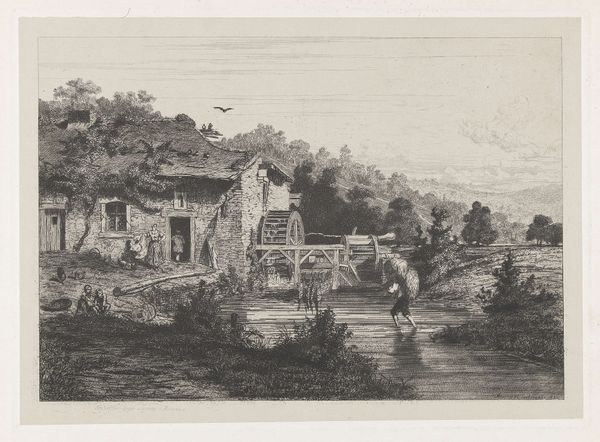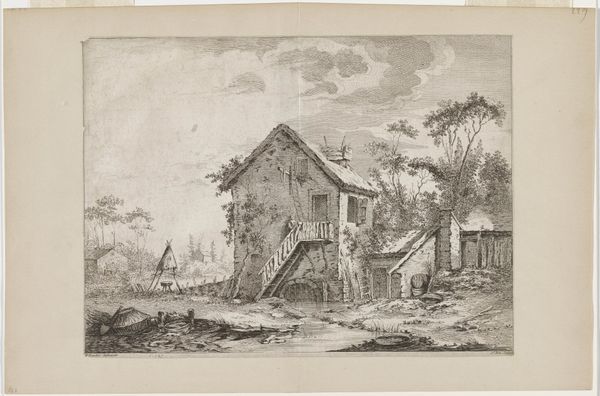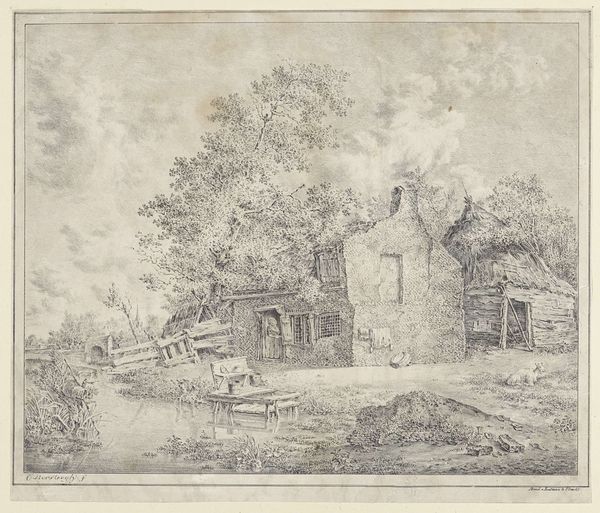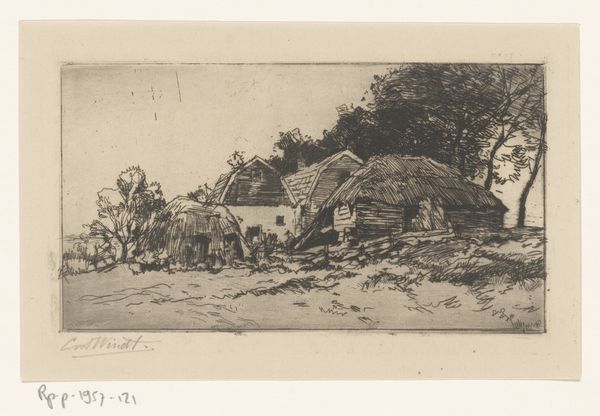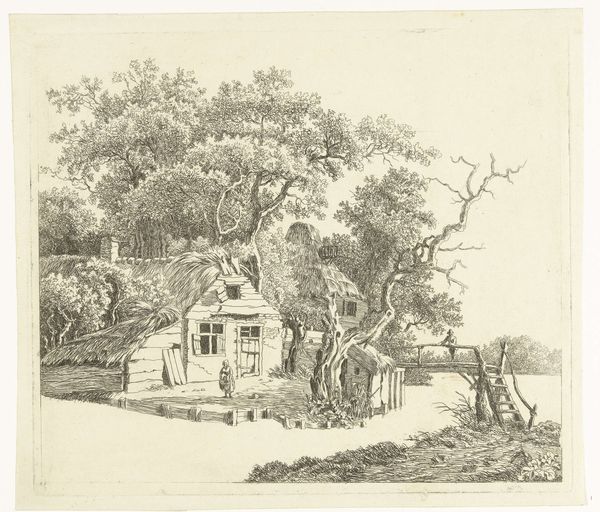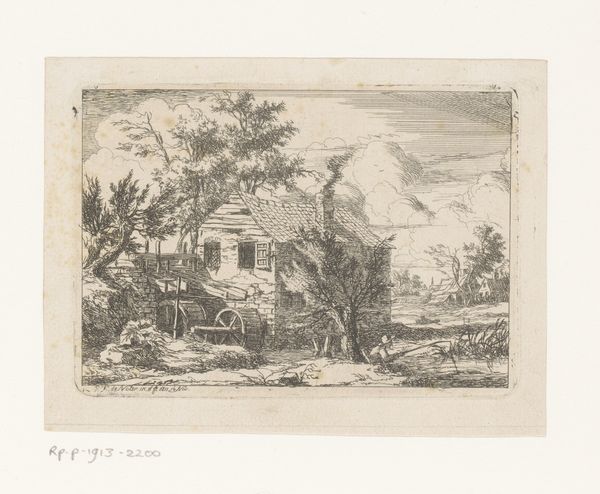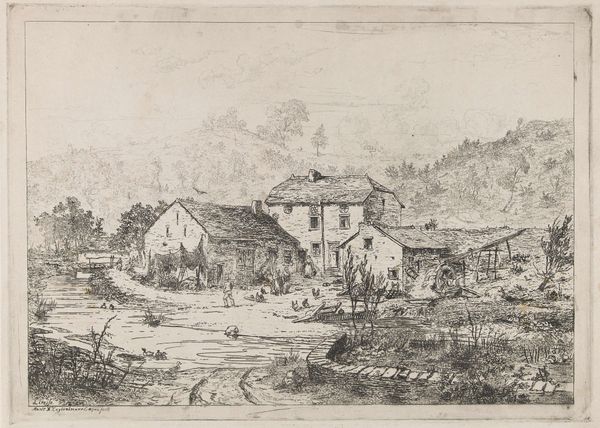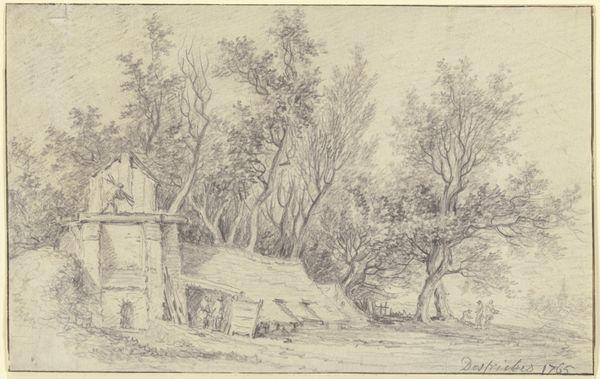
print, engraving
# print
#
landscape
#
romanticism
#
genre-painting
#
engraving
Dimensions: height 233 mm, width 325 mm
Copyright: Rijks Museum: Open Domain
Editor: So, here we have "Watermolen" from 1850, an engraving by Martinus Antonius Kuytenbrouwer, Jr., currently at the Rijksmuseum. It's a busy rural scene, with a watermill and several figures. The fine detail in the engraving is quite impressive. I am struck by how the water creates such compelling vertical reflections of the watermill structure. What formal qualities particularly stand out to you? Curator: Note the precise articulation of line. The artist masterfully uses line weight and density to create a sense of depth. Observe how the foreground is rendered with thicker, more closely spaced lines, progressively lightening and thinning toward the distant trees, establishing a clear perspectival structure. Also, how the strong horizontals of the water and the architecture create a stable base against which the organic forms of trees are offset, a visual contrast that enhances dynamism in the scene. Editor: The perspective is remarkable, how the eye is drawn into the center. Do you think this perspectival arrangement conveys particular ideas beyond a landscape? Curator: Indeed. Consider how the strong central vanishing point encourages our focus to settle directly at the confluence of industry and nature. The dark figure crossing the stream at this point serves a crucial compositional function as well: the weight upon his back echoes the form of the structure itself, thereby underscoring the symbiosis between labor and mechanical power. Moreover, note how the light falling across the man mirrors that striking the mill. How does that positioning suggest purpose? Editor: That's fascinating! I see that now, especially the deliberate relationship between labor, structure and nature through the manipulation of line and form. I am now able to clearly see the visual symbiosis. Curator: Precisely! The formal choices orchestrate a narrative around human endeavor and the pastoral idyll in its compositional arrangement. Close visual inspection certainly yields new understandings of the artwork’s narrative strategies. Editor: This way of seeing has really changed how I approach analyzing art; I can appreciate art's many layers.
Comments
No comments
Be the first to comment and join the conversation on the ultimate creative platform.
